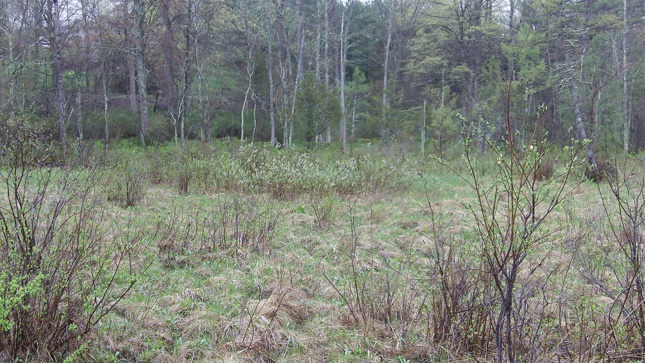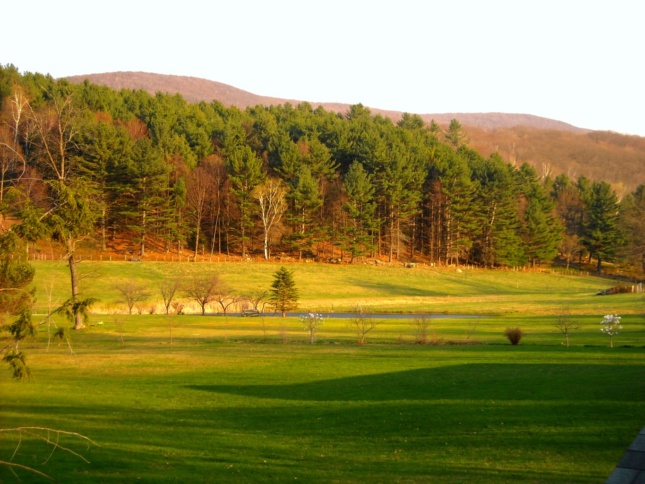We like to blame a lot of things for climate change—namely coal and cow farts—but if we were to search for a worthy scapegoat, architects might end up looking in the mirror. The building sector is responsible for 44.6 percent of U.S. carbon dioxide (CO2) emissions. And, with an estimated 1.9 trillion billion square feet to be built in the next 33 years, those emissions will not subside without significant intervention. On the flip side, for architects anyway, this means the power to reduce carbon emissions is quite literally in your hands. “No designer—I think—wakes up and says, ‘I want to make the world worse today,’” William McDonough, architect, designer, and sustainable development leader said. “To make the world better, that’s our job.”
Identifying successful ways to build sustainably can be difficult in a haze of greenwashing and checklist-style certifications, but many environmental experts, architects, and scientists are looking to mass-built timber as a reliable way to reduce carbon and fossil fuel output. A recent study, “Carbon, Fossil Fuel, and Biodiversity Mitigation with Wood and Forests,” stated that using wood as a building-material substitute could save “14 to 31 percent of global CO2 emissions and 12 to 19 percent of global FF [fossil fuel] consumption by using 34 to 100 percent of the world’s sustainable wood growth.”
Building with timber reduces the overall carbon footprint in several ways. First, wood is a renewable resource, and growing a tree is a low-impact method of production (i.e. it uses photosynthesis rather than a plethora of machines). Second, trees are grown in abundance all over the United States and don’t need to be imported from abroad, reducing the amount of energy expended on shipping. “Right now we harvest less than half of what we could and still be well within the threshold of sustainability,” Kathryn Fernholz, the executive director at Dovetail Partners, an environmental nonprofit, explained. “That’s not the same in every single scenario, but in general in the U.S., we have an abundance of wood.”

Third, and perhaps counter-intuitively, many environmentalists believe that harvesting trees allows forests to become more efficient at carbon sequestration. The logic is simple: When a tree is harvested, it stores carbon, then when another tree is planted in its place, it also will store carbon, making that plot of land’s carbon sequestration infinitely multipliable as trees are planted, grown, and harvested.
“There is a widely held belief that cutting down trees is bad and causes loss of forest, but a strong market for wood products would cause us to grow more forests,” Fernholz said. “The vast majority of deforestation is land conversion, using the land for something else like development or agriculture. We know what resources we have and we monitor them and adjust. Forestry is not in the same place it was a hundred or even fifty years ago when deforestation was an issue.”
While that stance of de-and reforestation is under debate among environmental experts, across the board, timber is generally a more sustainable building material because it is a renewable resource (provided that responsible forest practices are used). This includes the energy consumed to produce cross-laminated timber (CLT) in factories, which have a carbon emissions advantage over steel because the wood does not need to be heated over 2,700 degrees Fahrenheit like steel or concrete—in fact, unless the wood is kiln dried, heat isn’t need at all. Although embodied carbon is typically measured per building, because different amounts of each material are used in different scenarios, Wood for Good, a campaign by the timber industry to promote the material, claims that a ton of bricks requires four times the amount of energy to produce as a ton of sawn softwood (wood used for CLT); concrete requires five times, steel 24 times, and aluminum 126 times.
“Reporting carbon emissions for wood includes a range of different assumptions and methods,” explained Kathrina Simonen, an associate professor of architecture at the University of Washington and director of the Carbon Leadership Forum. “So sometimes it ends up negative and sometimes it ends up positive. It can be confusing.” She is optimistic, however, that research is close to resolving the differences. Responsible forestry practices are already underway, with harvest occurring on long rotations so that the forest has time to regenerate itself and care can be taken to avoid removing other plants, roots, and branches in the process.
Lastly, “Wood can be a durable good, as we’ve seen in ancient wooden buildings like the Temple at Nara, Japan [originally built in 745 AD and rebuilt in 1709],” McDonough said. “In [wood’s] history, it is often put into a cycle of use and reuse that can take it from large numbers to smaller and smaller [components].” Its ability to withstand centuries and to be disassembled and then reassembled into other buildings and furnishings keeps it out of the landfill and in a perpetual cycle of use until it can ultimately be returned to the environment in some form.

Although well over 90 percent of one-to-three-story residential buildings are already wood-built, there are only a handful of mid-rise and tall timber buildings across the United States, a result of building codes that often prohibit timber-built structures larger than four to six stories. However, thanks in part to innovative wood products, including CLT, nail laminated timber (NLT), and glue-laminated timber (glulam), wood construction can be used in buildings as tall as 40 stories. A study by consulting and engineering company Poyry and the New England Forestry Foundation shows that the greatest potential for timber-built is in mid-rise (six to 14 story) buildings, as it also tends to be more economical to build with timber at that scale. According to the Soft-wood Lumber Board, over two-thirds of the square footage in the mid-rise sector could be made with mass timber. These statistics combined, in addition to the taller structures that mass timber can create, have the potential to make a sizable dent in our CO2 and fossil fuel emissions.
Like virtually everything in architecture, though, it is all in the details; for timber to be sustainable it has to be done correctly, from responsible forestry practices to environmentally safe glues and binders to craftsmanship and the design itself. “It is tremendously exciting. Building with wood creates diverse opportunities—there are different species and materials that all can work,” Fernholz said. “However, it is important to recognize that some things can come from wood, but nothing replaces good design and planning.”
This is an article from our special November timber issue.